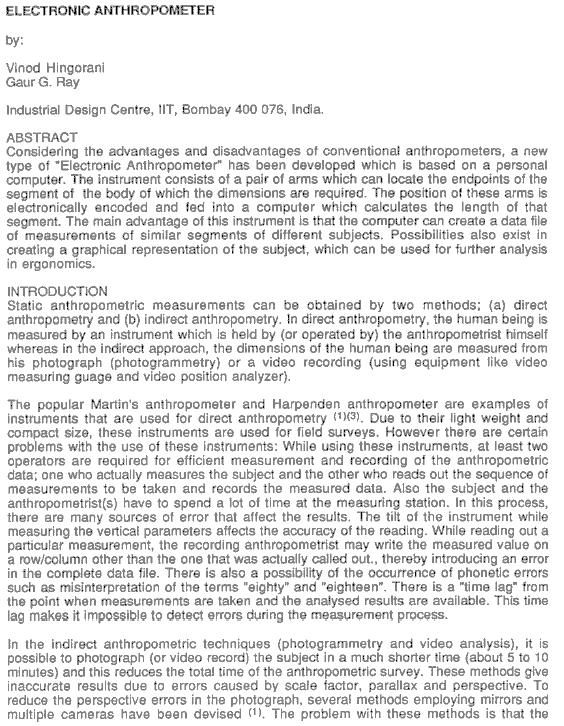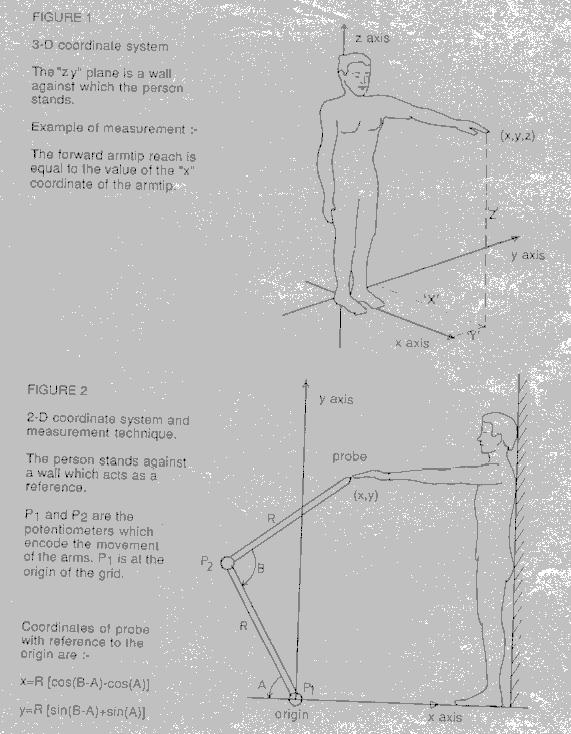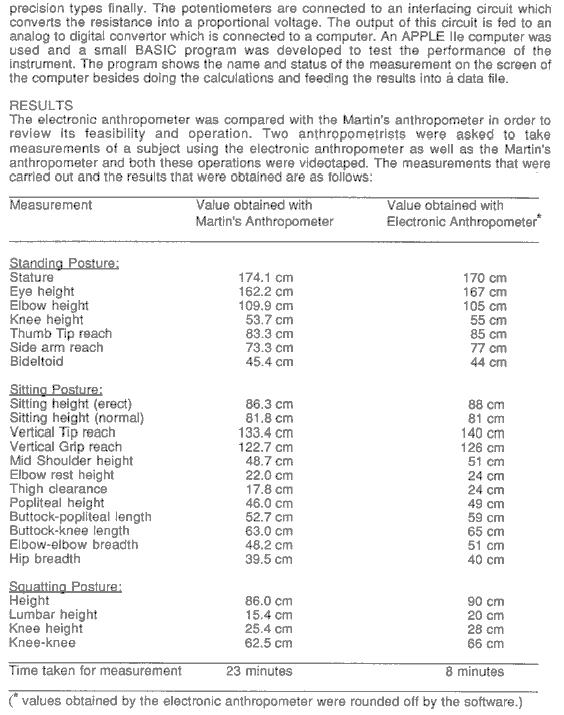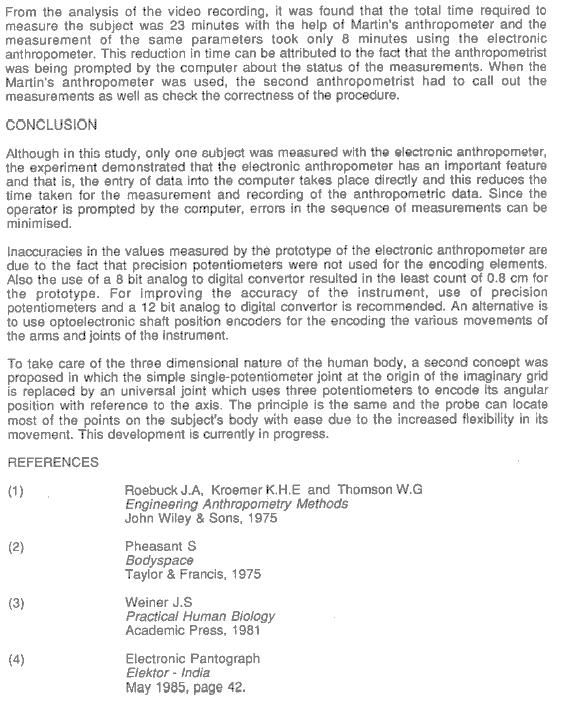 Ergonomics Research
Ergonomics Research
 Ergonomics Research
Ergonomics Research
|
![[Home]](gif/home.gif)

There are 2 presentations in ergonomics and applications of electronics & software:
- Computer simulation of center of gravity analysis of a human carrying a load
- Electronic Anthropometer
Computer simulation of center of gravity analysis of a human carrying a load
Humans often carry loads for work such as, farm produce (tea farming for example), for entertainment equipment such as haversacks and other luggage. This study attempts to simulate via computer generated graphics, the center of gravity of the human subject along with the load that is being carried. This program can simulate the shift in the center of gravity of the total entity (human + load) in order to optimize the correct placement of the load so that carrying it is comfortable.
This can then help designers to optimize the design of haversacks and other luggage.
This was presented at the "International Symposium of Ergonomics, Occupational Health and Safety", held at the Indian Institute of Technology, Bombay in January 1991.
Electronic Anthropometer
This is an instrument to measure human body dimensions. Anthopos + Metros - measurement of humans
Statistically analyzed data of human body dimensions is required for general design purposes such as furniture design, automobile design, transportation, and others. Data collection involves measuring over a 100 dimensions of the human body in various postures (sitting, standing, etc.). To get any significant statiscal data, a large number of human subjects of various populations are required.
Such measurements take about an hour or so if done with traditional caliper like instruments which are otherwise used for measuring corpses. Apart from being very intimidating, these instruments are pretty unsafe if not handled carefully and also extremely cumbersome to handle. The aim of the development of the electronic anthropometer is to reduce the time taken taken for measuring this data and to transfer this data directly into computer software that does the dimensional and statistical analysis. By dimensional analysis, I mean that the human measurement data is recorded in 3 dimensions and then other data is derived from this, obviating the need for redundancy in taking measurements.
This was presented as a research project at the seminar, "Recherche sur le Design", held at the University of Technology, France, in October 1990.
See the scanned original paper here:




